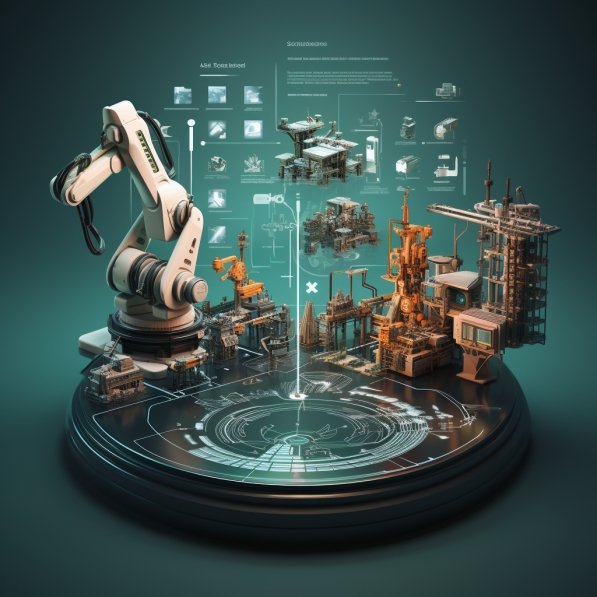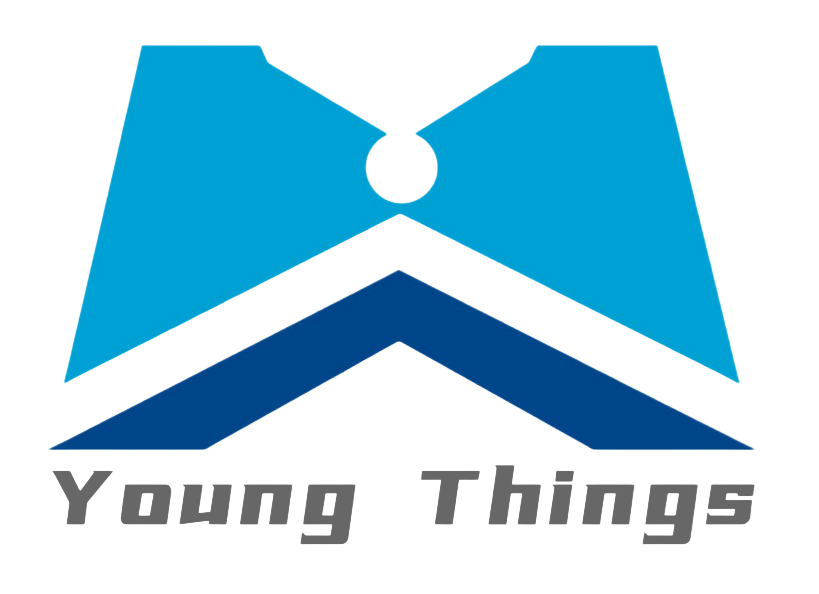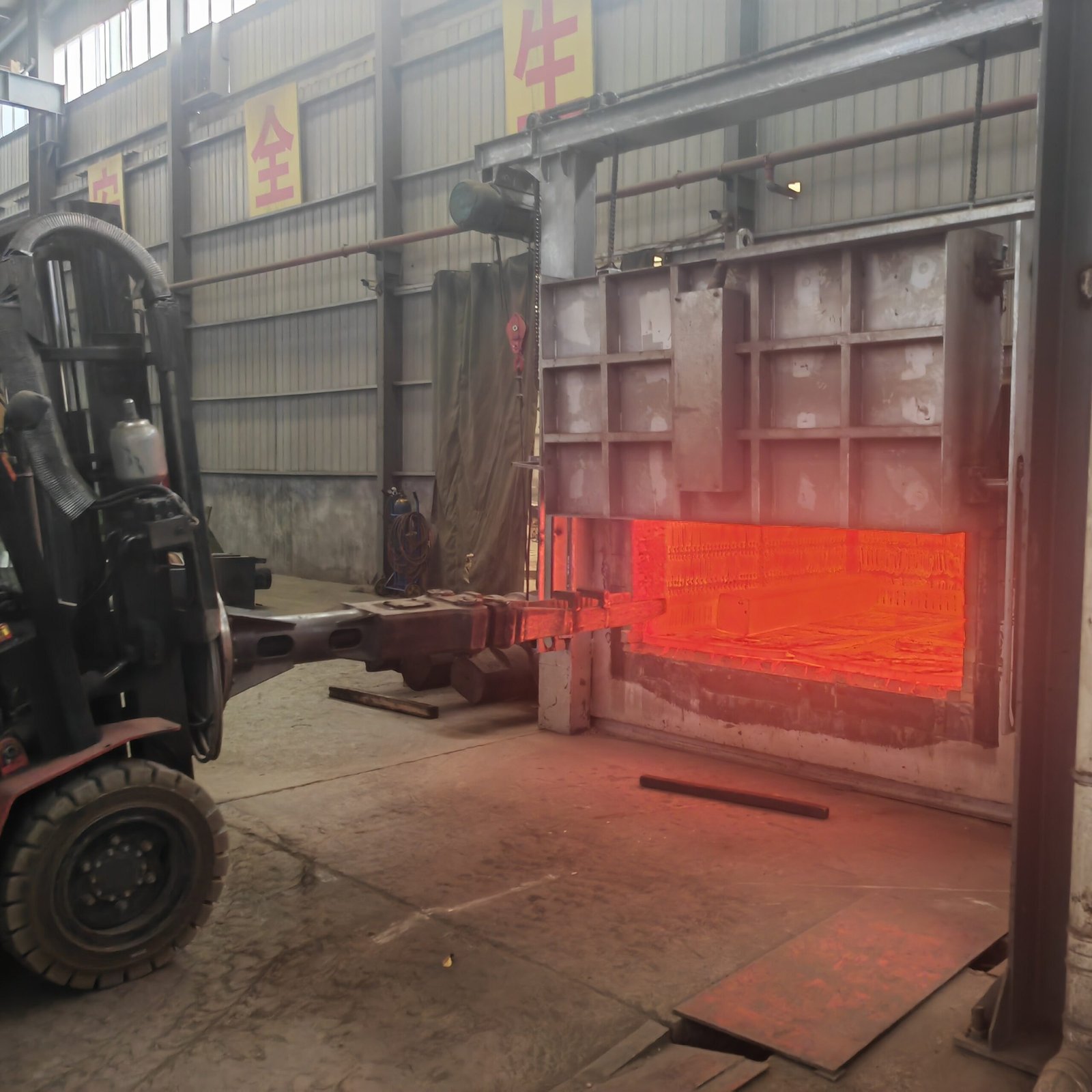In the realm of titanium alloy manufacturing, tradition has long dictated the processes and methodologies that shape this critical industry. However, as global demand surges and technological advancements accelerate, questions arise: can digitalization revolutionize titanium alloy manufacturing? To address this, this article explores the transformative potential of digital technologies in overcoming traditional challenges and ushering in a new era of efficiency, quality, and innovation.
At Young Things Metal Co. Ltd.,We are deeply aware of the evolving landscape. It is crucial to question traditional methods in pursuit of excellence. We specialize in high-quality titanium alloy. We understand the importance of embracing digital transformation. This helps us enhance our manufacturing processes. It also enables us to meet the stringent demands of our clients. Our clients come from sectors ranging from aerospace to medical devices.
Titanium alloys, prized for their exceptional strength-to-weight ratio and corrosion resistance, serve diverse sectors from aerospace to medical devices. However, traditional manufacturing faces persistent hurdles: material waste, variable quality, and high production costs. These challenges underscore the need for a paradigm shift. Digitalization promises to deliver this shift. Specifically, it encompasses a spectrum of technologies, including artificial intelligence (AI), the Internet of Things (IoT), robotics, and automation. When combined, these technologies work together to optimize manufacturing processes. By integrating them, manufacturers can enhance precision, streamline production flows, and reduce operational costs.
This transformative potential extends beyond efficiency gains. More importantly, it includes advanced product customization, real-time quality monitoring, and sustainable practices. As industries worldwide embrace digital transformation, titanium alloy manufacturing stands at a pivotal juncture. In this context, this article explores the innovations driving this transformation, examines real-world applications, and evaluates the challenges and opportunities ahead. By questioning tradition and embracing digitalization, the titanium alloy industry can unlock unprecedented capabilities, ensuring it remains at the forefront of innovation in the global manufacturing landscape.

1.Traditional Challenges in Titanium Alloy Manufacturing
Titanium alloys are renowned for their exceptional properties, making them indispensable in industries ranging from aerospace to medical devices. However, the path from raw material to finished product is fraught with challenges that have persisted over decades.
One of the primary hurdles is material waste. Titanium’s high cost and difficulty in machining contribute to significant material losses during production processes such as machining, forging, and casting. This inefficiency not only escalates manufacturing costs but also strains environmental sustainability efforts.
- Inefficiencies in production processes also plague traditional manufacturing methods. Variabilities in material properties and processing conditions often lead to inconsistent product quality, requiring meticulous oversight and frequent adjustments. These inefficiencies not only impact production timelines but also compromise product reliability and customer satisfaction.
- Quality control remains a critical concern in titanium alloy manufacturing. To ensure uniformity in mechanical properties, dimensional accuracy, and surface finish, stringent inspection protocols are essential. However, traditional methods, which rely on manual inspection and sampling, can be labor-intensive and prone to human error, potentially compromising the final product’s integrity.
Moreover, the high operational costs associated with traditional manufacturing methods hinder scalability and competitiveness in the global market. From raw material procurement to energy-intensive processing, each phase of production incurs substantial expenses, limiting profitability and investment in innovation.
Addressing these challenges necessitates a reevaluation of traditional manufacturing paradigms. As the industry evolves, digitalization emerges as a transformative force capable of mitigating these longstanding issues. By integrating advanced technologies, titanium alloy manufacturers can unlock efficiencies. Embracing digital transformation enhances quality assurance. It also helps pioneer sustainable practices. This is essential in a rapidly evolving global landscape.
2.Digitalization in Titanium Alloy Manufacturing
In an era defined by rapid technological advancement, digitalization is a pivotal catalyst. It is reshaping the landscape of titanium alloy manufacturing. At its core, digitalization integrates advanced digital technologies. These technologies optimize and streamline manufacturing processes. They also enhance product quality and drive innovation.
-
- Examples of Digital Technologies: AI-driven predictive maintenance systems continuously monitor equipment performance, preempting potential failures and optimizing maintenance schedules. Meanwhile, IoT-enabled sensors gather real-time data on production parameters, facilitating adaptive manufacturing processes that respond dynamically to changing conditions. Additionally, robotics automate intricate tasks like machining and assembly with unparalleled speed and accuracy, reducing labor costs and minimizing human error.
- Benefits of Digitalization: The adoption of digital technologies in titanium alloy manufacturing yields multifaceted benefits. For instance, enhanced process efficiency translates to reduced cycle times and lower production costs, bolstering operational competitiveness in global markets. Furthermore, real-time data analytics empower proactive decision-making, optimizing resource allocation and minimizing waste. As a result, improved product quality and consistency arise from precise control over manufacturing variables.This ensures compliance with stringent industry standards and customer specifications, enhancing overall reliability and performance.
As titanium alloy manufacturing evolves, digitalization promises to redefine industry norms. It empowers manufacturers to surpass traditional limitations. It also pioneers new frontiers of efficiency, quality, and sustainability. Embracing this technological revolution is not just an option but a strategic imperative. It is essential for staying ahead in an increasingly competitive global marketplace.
3.Advanced Technologies Driving Digitalization
The transformation of titanium alloy manufacturing through digitalization is driven by the convergence of advanced technologies. These technologies revolutionize traditional processes and capabilities, pushing the industry toward greater innovation and efficiency.These technologies not only enhance operational efficiency but also elevate product quality and innovation across the industry.
-
- Internet of Things (IoT):IoT devices are embedded throughout manufacturing facilities. They gather real-time data on equipment performance, environmental conditions, and product quality metrics. This continuous data stream enables predictive maintenance and proactive quality assurance. It also supports adaptive manufacturing processes that dynamically respond to fluctuations in production demands.
- Robotics and Automation: Robotics play a pivotal role in automating repetitive tasks such as material handling, machining, and assembly. Collaborative robots (cobots) work alongside human operators, increasing productivity, reducing errors, and improving workplace safety. Advanced automation systems integrate seamlessly with digital workflows, optimizing throughput and minimizing downtime.
- Additive Manufacturing (3D Printing): 3D printing technologies revolutionize titanium alloy manufacturing. They enable complex geometries, rapid prototyping, and customized product designs. Additive manufacturing reduces material waste and shortens lead times. It also facilitates on-demand production of high-value components. These are especially important for aerospace, medical, and automotive applications.
- Data Analytics and Digital Twins: Data analytics platforms leverage AI-driven insights to optimize supply chain logistics, resource utilization, and inventory management. Moreover, digital twins, which are virtual replicas of physical assets, simulate real-world manufacturing scenarios. This enables predictive modeling, scenario testing, and continuous improvement in operational efficiency and product performance.
- Augmented Reality (AR) and Virtual Reality (VR):AR and VR technologies enhance training programs in titanium alloy manufacturing. They improve maintenance procedures and streamline design validation processes. These immersive tools boost precision and efficiency. They make complex tasks easier to understand and execute. Moreover, immersive simulations offer technicians and engineers interactive training modules. As a result, they receive real-time guidance, which improves skill retention. In addition, this enhances overall operational proficiency, ensuring better performance in real-world scenarios.
- Case Studies and Industry Applications: Leading titanium alloy manufacturers deploy these advanced technologies to achieve transformative outcomes in production efficiency, product innovation, and market competitiveness. For example, case studies highlight success stories of improved throughput, reduced costs, and enhanced product quality through the strategic integration of digital technologies.
As titanium alloy manufacturing embraces digitalization, advanced technologies bring new opportunities. They not only optimize existing processes but also pave the way for future advancements. Moreover, these technologies contribute to progress in material science. In addition, they promote sustainability and drive industrial automation. Consequently, the industry is set to experience continued innovation and growth.The synergy between digital innovation and traditional craftsmanship propels the industry towards new frontiers of excellence and global leadership.
4.Impact on Product Design and Development
- Advanced Design Capabilities: Digital tools, such as computer-aided design (CAD) software and simulation platforms, enable intricate geometries and complex assemblies. Traditional methods often struggle to replicate these designs. Moreover, engineers leverage these capabilities to optimize product performance. They also minimize weight and enhance functionality. As a result, the boundaries of design possibilities are pushed further, particularly in aerospace, medical, and automotive sectors.
- Customization and Personalization: Digitalization enables bespoke manufacturing solutions tailored to specific customer requirements. Parametric design tools and virtual prototyping allow for rapid iteration and customization, ensuring products meet exacting standards and market demands. Manufacturers leverage customer feedback and real-time data analytics to refine designs and deliver personalized solutions with enhanced precision and efficiency.
- Integration of Additive Manufacturing: Additive manufacturing technologies, such as 3D printing, revolutionize product development by enabling on-demand production of intricate components and prototypes. These technologies eliminate traditional tooling constraints, reduce lead times, and facilitate cost-effective small-batch manufacturing of high-value titanium alloy parts. Industries benefit from accelerated innovation cycles and reduced time-to-market for new products and iterations.
- Enhanced Collaboration and Co-Creation: Digital platforms foster collaborative design processes across global teams, suppliers, and stakeholders. Virtual reality (VR) and augmented reality (AR) technologies enable immersive design reviews, real-time collaboration, and remote training sessions, bridging geographical distances and accelerating decision-making processes. Cross-functional teams leverage digital twins and simulation tools to validate design concepts, assess performance parameters, and refine manufacturing processes before physical production begins.
As digitalization continues to reshape titanium alloy manufacturing, advancements in product design and development are accelerating. This heralds a new era of agility, customization, and innovation. By harnessing the power of digital tools, manufacturers can streamline their processes. Moreover, collaborative workflows enable teams to work more efficiently. As a result, they are poised to unlock unprecedented opportunities. Furthermore, these innovations set new benchmarks for excellence in the global marketplace.
5.Quality Control and Assurance
In titanium alloy manufacturing, ensuring stringent quality standards is paramount to maintaining product integrity, reliability, and customer satisfaction. With this in mind, digitalization revolutionizes traditional quality control practices, introducing advanced methodologies and technologies that enhance precision, consistency, and compliance throughout the production process.
- Real-Time Monitoring and Data Analytics: Digitalization enables real-time monitoring of key production parameters using IoT sensors and connected devices. These sensors collect data on temperature, pressure, humidity, and other critical variables, thus providing continuous insights into manufacturing conditions. Additionally, data analytics platforms process this information to identify trends, detect anomalies, and optimize process parameters, thereby ensuring optimal product quality and performance.
- Predictive Maintenance: AI-driven predictive maintenance systems analyze equipment performance data to forecast potential issues before they escalate into failures. By predicting maintenance needs and scheduling interventions proactively, manufacturers minimize downtime, optimize equipment lifespan, and prevent quality deviations that could impact product consistency.
- Automated Inspection Technologies: Robotics and AI-powered inspection technologies automate quality assurance processes, reducing reliance on manual inspections prone to human error. Automated systems conduct precise dimensional measurements, surface inspections, and defect detection with unparalleled accuracy, ensuring adherence to stringent tolerances and specifications.
- Digital Twins and Simulation: Digital twins—a virtual replica of physical assets—simulate manufacturing processes in real-time, providing predictive insights into product behavior and performance. Manufacturers leverage simulation tools to validate design concepts, assess production feasibility, and optimize process parameters before physical production begins. This virtual testing environment enhances decision-making, mitigates risks, and accelerates time-to-market for new products.
- Certification and Compliance: Digitalization streamlines documentation management and regulatory compliance by digitizing certification processes and ensuring traceability throughout the supply chain. Blockchain technology enhances transparency and security, enabling immutable records of product provenance, material certifications, and compliance with industry standards and customer requirements.
- Case Studies and Industry Applications: Leading titanium alloy manufacturers leverage digital quality control and assurance technologies to achieve superior product quality, consistency, and regulatory compliance. Case studies illustrate advancements in defect reduction, improved first-pass yield rates, and enhanced customer satisfaction through strategic integration of digital quality management systems.
As digitalization continues to reshape quality control practices in titanium alloy manufacturing, these advanced technologies empower manufacturers to uphold the highest standards of product excellence, reliability, and market competitiveness. By embracing digital transformation, manufacturers pave the way for sustained innovation and leadership in the global marketplace.
6.Challenges and Considerations
While digitalization offers transformative benefits to titanium alloy manufacturing, its adoption presents unique challenges and considerations that manufacturers must navigate to realize its full potential.
- Initial Investment and Integration Costs: The upfront costs associated with implementing digital technologies, such as IoT infrastructure, AI systems, and advanced robotics, can be substantial. Manufacturers must carefully assess capital expenditures, ROI timelines, and scalability considerations to justify investments in digitalization.
- Skills and Workforce Training: Transitioning to digitalized manufacturing processes requires a skilled workforce proficient in handling advanced technologies. Training programs and upskilling initiatives are essential to equip employees with the knowledge and expertise to operate, maintain, and optimize digital systems effectively.
- Data Security and Cybersecurity Risks: Connected devices and IoT sensors increase vulnerabilities to cyber threats and data breaches. Robust cybersecurity measures, including encryption protocols, access controls, and regular audits, are imperative to safeguard sensitive production data and intellectual property.
- Interoperability and System Integration: Integrating disparate digital technologies and legacy systems poses challenges in achieving seamless interoperability and data exchange. Standardization efforts and compatibility assessments are essential to ensure cohesive system integration and optimize operational efficiency.
- Regulatory Compliance and Standards: Adhering to regulatory requirements and industry standards remains crucial in digitalized manufacturing environments. Manufacturers must navigate evolving regulatory landscapes, certify digital systems for compliance, and maintain audit trails to ensure product quality and safety.
- Change Management and Organizational Culture: Embracing digital transformation necessitates cultural shifts and change management strategies within organizations. Overcoming resistance to change, fostering a culture of innovation, and promoting collaboration across departments are critical to realizing the full benefits of digitalization.
- Maintenance and Scalability: Continuous maintenance of digital infrastructure and scalability considerations are vital to sustaining long-term operational efficiency and competitiveness. Predictive maintenance strategies and agile scalability frameworks mitigate risks of downtime and support adaptive manufacturing capabilities.
- Environmental Sustainability: While digitalization promises efficiencies and reduced waste, its environmental impact must be carefully managed. Manufacturers should consider energy consumption, resource utilization, and lifecycle assessments to ensure sustainable manufacturing practices.
Navigating these challenges requires a strategic approach, collaboration across disciplines, and a commitment to continuous improvement. By addressing these considerations proactively, titanium alloy manufacturers can harness the transformative power of digitalization to achieve operational excellence, innovation leadership, and sustainable growth in a dynamic global marketplace.
As a medium-sized enterprise, Young Things Metal Co. Ltd. is keenly aware of the challenges associated with digital transformation, including the need for significant initial investment and workforce training. However, we view these challenges as opportunities to innovate and enhance our capabilities, ensuring that we remain competitive and responsive to the needs of our clients.
7.Future Trends and Conclusion
The future of titanium alloy manufacturing is shaped by accelerating technological advancements, evolving consumer demands, and dynamic market dynamics. As digitalization continues to redefine industry standards and operational paradigms, several key trends emerge that promise to shape the future landscape of titanium alloy manufacturing.
- Advancements in Material Science: Ongoing research in titanium alloy compositions and processing techniques leads to lighter, stronger, and more corrosion-resistant materials. Innovations in additive manufacturing and nanostructuring unlock new possibilities for customized, high-performance applications in aerospace, medical, and automotive sectors.
- Integration of Artificial Intelligence and Machine Learning: AI-driven predictive analytics, autonomous systems, and machine learning algorithms improve decision-making and operational efficiency. Smart factories use AI to optimize production, predict maintenance needs, and adapt to market demands with precision and agility.
- Sustainability and Circular Economy Initiatives: Environmental stewardship drives manufacturers to adopt sustainable practices, reduce carbon footprints, and promote circular economy principles. From eco-friendly production methods to recycling titanium scrap, these initiatives shape the future of manufacturing.
- Industry 4.0 and Digital Twins: The convergence of IoT, digital twins, and cloud computing gives manufacturers real-time insights, remote monitoring, and predictive maintenance capabilities. Digital twins simulate processes, enabling virtual testing, performance optimization, and rapid prototyping before physical production.
- Global Supply Chain Resilience and Localization: Awareness of supply chain vulnerabilities pushes manufacturers to diversify sourcing strategies and strengthen local production. Localization helps mitigate risks from geopolitical instability, trade disruptions, and logistical challenges, ensuring a stable supply of titanium alloy materials and components.
In conclusion, digitalization represents a transformative force reshaping titanium alloy manufacturing into a dynamic, agile, and innovation-driven industry. By embracing advanced technologies, fostering collaboration, and prioritizing sustainability, manufacturers unlock new opportunities to deliver superior products, enhance operational efficiencies, and meet evolving customer expectations in a competitive global marketplace.
As titanium alloy manufacturers navigate the complexities of digital transformation, strategic investments in technology, talent development, and sustainable practices are essential to driving long-term growth and leadership. By embracing future trends and remaining adaptable to market dynamics, manufacturers can position themselves at the forefront of innovation and drive the next wave of advancements in titanium alloy manufacturing.
Share this article
Written by : 钛合金网
Follow us
Table Of Content



